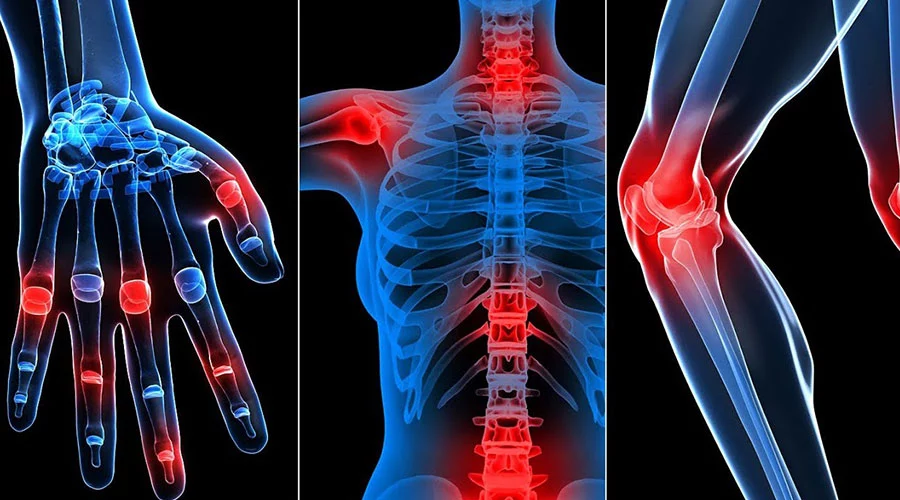Knee and Hip Pain May Indicate Joint Calcification
Hallux valgus, which manifests itself with swelling and protrusion in the big toe, worries women, especially, aesthetically. However, aside from this protrusion and swelling negatively affecting the aesthetic appearance; If left untreated, it can cause severe pain and foot problems that can lead to surgery.

Pointed toes and heels can trigger your discomfort
Hallux valgus; foot is a condition that affects the joint between the 1st toe and the 1st comb bone. This swelling and bulge in the joint is called "bunion". In fact, this is the painful protrusion and deformity of the toes that are predominantly seen in women and negatively affect social life. This deformity actually has a more complex structure than the swelling and protrusion. This disease is not seen in cultures that do not wear shoes. While it is seen in 40% of women, there is a genetic predisposition as high as 70%. It is frequently seen in women who wear high heels and pointed toe shoes for many years. Wide shoes that provide comfortable space for the toes reduce the chance of this deformity to develop; If the bunion is developed, it also helps in reducing the discomfort caused by it.
It can manifest itself with unbearable pain
Hallux; The medical term used for the first finger and valgus is an anatomical term that indicates that the deformity is directed outward from the midline. Therefore, hallux valgus is an orthopedic disorder in which the big toe is directed towards the outer side of the foot. If this deformity becomes severe, secondary changes occur that increase the standing problem. First, redness and swelling develop in that area. As time passes, the tissue here thickens and a larger protrusion occurs, causing the shoe to rub. Many problems in the foot are caused by abnormal pressure and friction. As time passes, complaints arise due to the skin and soft tissue remaining between the hard bone inside and the hard shoe outside. Any bumps in the bone make the situation worse. The skin responds to constant pressure and friction by creating "callus tissue". The soft tissue underneath reacts by thickening. These structures cause pain in the patient. It is necessary to reduce the pressure to reduce this pain. This is possible by reducing the pressure created by the shoe from the outside or surgically removing the bone protrusion inside. Complaints due to hallux valgus are usually on the protrusion called "bunion". Bunion is usually painful. Severe hallux valgus deformity also causes cosmetic problems. Especially female patients have difficulties in finding suitable shoes for their feet. As the deformity increases, the second toe rises upward and it is exposed to pressure and friction in the shoe, causing pain in patients.
Be sure to see an orthopedist
The diagnosis is made after a careful, detailed history and clinical examination. Information is obtained about the patient's shoe choices. Foot X-rays are taken. The angles between bones are measured by your doctor, which helps determine the method of treatment with x-rays. Hallux valgus treatment begins with the selection and wearing of shoes suitable for the foot. In the early stages of the disease, replacing pointed shoes with wide front shoes can reduce complaints. Wide shoes are beneficial in reducing pain by reducing the pressure on the bunion. In addition, it can be aimed to reduce the pressure and pain with special pads and rollers between the fingers.
Definitive results can be obtained with surgical method
If all non-surgical methods cannot relieve the patient's pain or if the disease is diagnosed at an advanced stage, surgical treatment options are evaluated. More than 100 methods have been described in hallux valgus surgery. Some of these methods are:
Bunionectomy (removing the bunion): If the hallux valgus is in the early stage, only removal of the bunion can be effective. With the incision made over the bunion, the protruding bone tissue is cut with the appropriate orthopedic material. The bone is shaved.
Metatarsal Osteotomy (Correction of the Bone): Generally, when bunionectomy alone is not enough to correct the deformity in hallux valgus surgery, it may be necessary to correct the comb bone with incisions. An incision is made in the bone and the angle that creates the deformity in the bone and joint is corrected. Patients are followed up with postoperative bandage or plaster treatment. On the first day after the operation, the patient is walked on crutches. It is not allowed to step on the operated foot. Sutures are removed on the 15th day of the operation. Control graphs are taken. If there is bone union in 6 weeks, metal nails are removed and the patient is allowed to press. This recovery period of about 6 weeks should be considered as a small problem besides your big complaints such as the negative effects of the disease in your social life and pain all the time.


